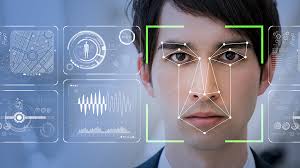
As the digital world expands and cyber threats grow more sophisticated, traditional passwords and PINs are proving increasingly vulnerable. By 2025, biometric technologies—which use unique physical or behavioral traits to verify identity—are rapidly becoming the cornerstone of personal security. From unlocking smartphones to securing sensitive government facilities, biometrics are redefining how we protect ourselves in both physical and digital spaces.
So, what is driving the rise of biometrics? How are these technologies changing personal security today and in the future? Let’s explore the exciting landscape of biometrics and their role in shaping safer, more convenient security systems.
1. What Are Biometrics?
Biometrics refer to measurable, unique characteristics of individuals that can be used for identification and authentication. Common types include:
- Fingerprint recognition
- Facial recognition
- Iris and retina scans
- Voice recognition
- Behavioral biometrics such as typing patterns or gait analysis
These identifiers are difficult to fake or steal, offering a more secure alternative to passwords.
2. Biometrics in Everyday Life
By 2025, biometrics have become deeply integrated into daily activities:
- Unlocking smartphones and laptops with a fingerprint or face scan.
- Accessing banking apps and digital wallets through biometric authentication.
- Airport security and immigration checks using facial or iris scans.
- Workplace access control replacing ID cards with biometric readers.
This convenience makes security more seamless without sacrificing safety.
3. Advantages Over Traditional Security Methods
Biometric security offers several key benefits:
- Higher accuracy and security: Unique biological traits are hard to duplicate.
- Convenience: No need to remember complex passwords or carry physical tokens.
- Speed: Instant verification speeds up access and reduces friction.
- Non-transferability: Unlike passwords or cards, biometric traits can’t be shared or lost.
These advantages are driving widespread adoption across sectors.
4. Emerging Trends in Biometric Security
New developments are pushing biometrics beyond simple scans:
- Multimodal biometrics combine multiple traits (e.g., face + voice) for stronger authentication.
- Behavioral biometrics analyze patterns like typing rhythm or mouse movements to detect fraud in real-time.
- Wearable biometric sensors monitor health and identity continuously for adaptive security.
- AI-powered biometric systems improve accuracy and detect spoofing attempts.
These innovations aim to make security smarter and more resilient.
5. Privacy and Ethical Considerations
Despite their benefits, biometrics raise important privacy and ethical questions:
- How is biometric data collected, stored, and protected from breaches?
- What consent is required before capturing biometric information?
- How do we prevent misuse or surveillance without accountability?
- Can biases in biometric algorithms lead to discrimination?
Addressing these concerns through regulations and transparent policies is critical for trust.
6. The Future: Biometrics and Beyond
Looking ahead, biometrics will increasingly merge with other technologies:
- Decentralized identity systems will allow individuals to control their biometric data securely.
- Integration with blockchain could provide immutable proof of identity without centralized databases.
- Biometrics combined with AI and IoT will enable adaptive, context-aware security systems.
- Contactless biometrics will grow, spurred by health and hygiene considerations post-pandemic.
Together, these trends point toward a future where identity verification is seamless, secure, and user-centric.
Final Thoughts
Biometrics are transforming personal security by offering a powerful blend of convenience, accuracy, and protection. While challenges around privacy and ethics remain, continued innovation and responsible governance will unlock biometrics’ full potential to keep our digital and physical lives safer.
As we move further into the digital age, biometrics are poised to become the trusted guardians of our identity—helping us navigate an increasingly connected world with confidence and ease.
